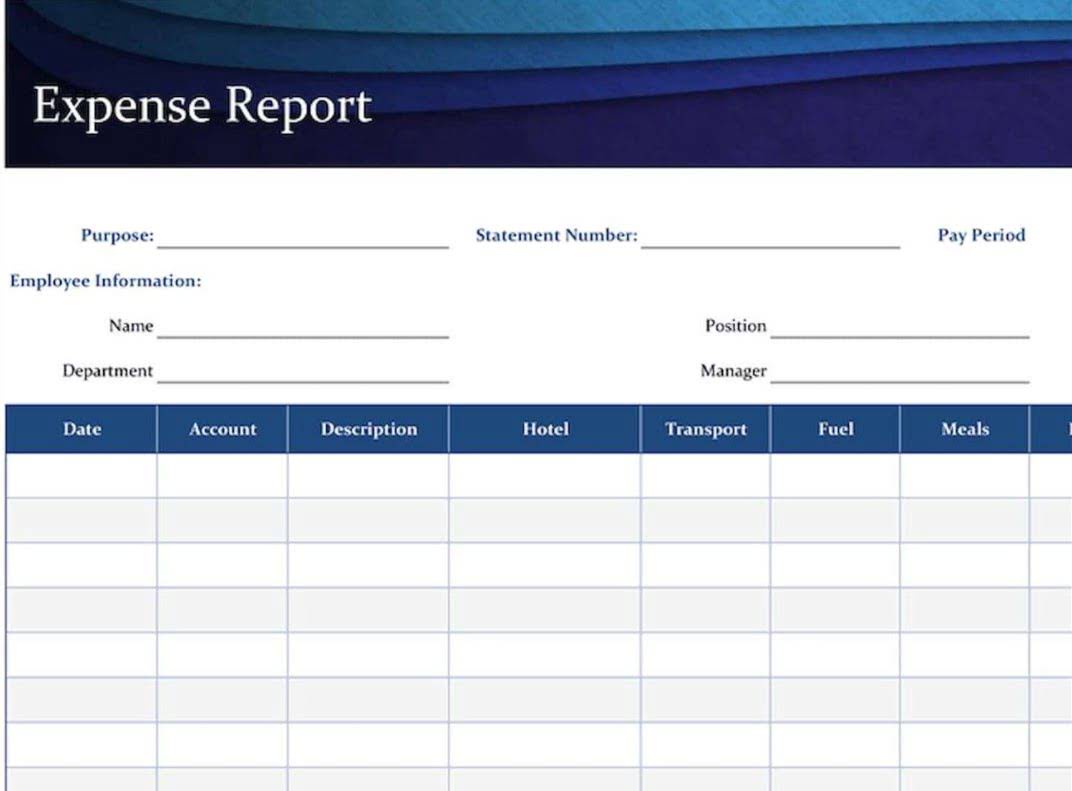
It’s a form of tribal knowledge that’s hard to master, and difficult to replace. Attached to your digital invoice record, is an image of the original invoice that makes it easy to view the printed information and to double check any data entries are virtual accountant correct. All the essential steps are needed to complete a purchase when an order is placed, and the customer receives the desired product or service. Once you’ve received payment, use our receipt maker to create a receipt and send it to clients. Re-use all the details from your invoice or quote to have the receipt ready in seconds. The world’s simplest way to invoice customers, from your phone or laptop.
- Another example comes from the 1980s and 1990s when companies started using bar codes on invoices to speed up payment processing.
- Simply provide some preliminary information about your project and our experts will handle the rest.
- The accounts payable process workflow covers any transaction that involves payment, to both external and internal payments.
- This reduces the risk of non-compliance, which carries costly fines and consequences.
- Set up rules for flagging discrepancies, such as price variances or quantity mismatches.
- New technologies like workflow automation now provide businesses opportunities to derive more value out of their accounts payable processing.
Business Expense Tracker
She is a former CFO for fast-growing tech companies with Deloitte audit experience. Barbara has an MBA from The University of Texas and an active CPA license. When she’s not writing, Barbara likes to research public companies and play Pickleball, Texas Hold ‘em poker, bridge, and Mah Jongg. Invoice coding is the process of embedding additional information into an invoice using a unique system of codes. By following these steps, you can effectively write an invoice code whether you have a purchase order as a reference or need to code an invoice without one. While it may seem like a routine task, the impact of invoice coding on financial operations is more significant than you might think.

Latest Posts
- Automation improves accuracy of the invoice line items and their categorization within the Account Ledger.
- With IntelliChief, any user who has the appropriate permissions – no matter what department they work in – can assign a GL code to a non-PO invoice.
- When you add high turnover and a relatively long “time to productivity” to the mix, accounts payable invoice processes can really suffer.
- GL coding also helps segregate your liabilities and expense accounts for your balance sheet, allowing you to report correct financial data and avoid legal issues.
- While most invoice coding systems aren’t nearly that complicated, even simple systems can slow the accounts payable process as a company expands, adding new departments and locations to the list.
- It provides complete visibility into every transaction, ensuring accurate and fast invoice coding and processing.
When a company receives a bill or invoice from a supplier or vendor for goods or service credit, it is often referred to as a vendor invoice. These invoices are entered as credits in the Accounts Payable account, increasing the credit balance in Accounts Payable. When the company pays off the vendor it reduces Accounts Payable with a debit amount. The usual credit balance in Accounts Payable is the amount of vendor invoices that have been recorded and not yet paid. This might be the hardest step because you need a thorough understanding of the process and all its challenges and obstacles. Follow the entire invoice process from handling the mail to filing after completion.
- Expense sub-accounts include identifiers for location, department, cost center, and detailed expense category.
- Usually, the purchase order contains the GL codes or table items and other information needed to code the invoice.
- The account manager must choose software that addresses most of the pain points presented by current systems.
- Existing manual AP processes present certain challenges to the accounting team.
- This account coding helps them allocate vendor payments to the right internal budgets.
- Set up GL codes is done in a descending fashion, i.e., starting from the largest natural numbers.
- Generate monthly reports – finance managers need to stay informed on the cash flow and always prepare for audits and information.
What Is the Journal Entry for Invoice Processing?
- For example, if you’re running a construction company and working on multiple projects simultaneously, each project has its own budget and expenses.
- DOKKA stays up-to-date on tax codes and accounting standards, automatically applying them to invoices to ensure full compliance.
- The full-cycle accounts payable can be mapped using the accounts payable process flow chart.
- Invoice processing time from arrival to approval goes from 11 to 3 days on average for most customers.
- Your accountants might spend hours GL coding and processing invoices, leading to delays in payment transactions, which negatively impacts your company’s supply chain.
- Automation of the process significantly reduces the amount of manual data entry, allowing AP teams to focus on more value-adding tasks.
- After coding the invoice, Billy matches the invoice details against the PO details to verify the invoice.
Below, we explore the various steps of the accounts payable workflow, with a focus on invoice coding. Non-PO coding income summary is a valuable tool for organizations that need to track expenses that were incurred without a purchase order. By automating the coding of Non-PO invoices companies can categorize expenses far faster than the standard manual entry. This gives companies the ability to track, analyze, and manage the performance of vendors in real-time. Automation improves accuracy of the invoice line items and their categorization within the Account Ledger. Once you’ve coded an invoice, our software can instantly send it on for approval.
Odoo ERP: The Total Guide

The codes connect the invoice items to the appropriate expenses in your company’s financial records. For example, if your company buys a box of pencils, the invoice for stationery can be assigned with the general ledger (GL) code. In this article, We’ll give you a refresher on how invoice coding works, how to automate coding for PO and non-PO invoices, and the benefits of using invoice processing automation for your AP workflows. The beauty of invoice coding is that it creates a clear, organized record of every dollar spent.
Integrate with your business systems:

Coding invoices demands a detailed review, not just of the document itself but also invoice coding of its broader context.
Accuracy

RPA tools learn your GL coding practices as a base and automatically assign correct GL codes and cost centers to your invoices. For example, suppose line items containing chargers from a vendor are assigned to GL code 2100, and those having computers are given GL code 2400. When recurring invoices from the same vendor are received,, the tool automatically updates GL code 2100 for an invoice only containing chargers. Part of the accounts payable invoice processing workload is matching invoice data with related purchase orders and, if applicable, receiving reports (for 2-way or 3-way matching). Three-way matching verifies that goods were ordered in the same quantities at the prices billed by line item on new invoices and that the company is only paying for goods after received. Coding invoices in accounts payable has traditionally been a manual process that requires too much time to complete, is subject to human error, and increases invoice processing costs.
